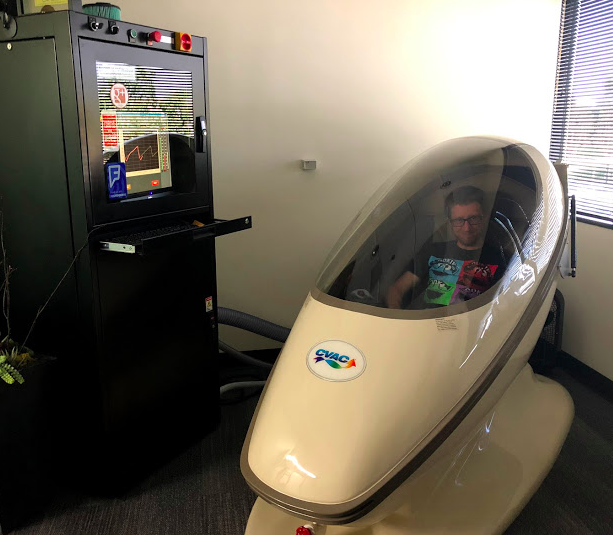Our seven-day trek took us to the highest point on the continent at 19,341 ft, towering over the surrounding African plains, and where there is about half of the effective oxygen in the air than there is at sea level.
The Problem: Altitude Sickness does not depend on your health, fitness level, or age.
The biggest difficulty in climbing Mt. Kilimanjaro is that the oxygen density in the air noticeably decreases as your altitude increases. This inevitably causes some level of altitude sickness and its symptoms: headache, fatigue, dizziness, nausea, and difficulty sleeping, among others. All of the “squatty potty” bathrooms we saw on the trail confirmed these stories of urgent vomit and diarrhea.
Altitude sickness, or acute mountain sickness (AMS), does not depend on your health, fitness level, or age. Marathon runners and Olympic athletes could get sick from the high altitude if they ascend too quickly. You won’t know with certainty how you will react until you are there.
Three Surprising Ways to Overcome The Altitude
The basic science is that our bodies acclimatize to higher altitudes by producing more red blood cells, which deliver the oxygen to your muscles. While there are supposedly certain foods you can eat to increase your red blood cell count, we did not change our diet. And while being in good physical condition will help you withstand the stress of consecutive days of hiking and camping, we did not do any additional physical training beyond our normal gym routine a few days a week.
Here are the top three ways that most drastically prepared us for our trek to the summit.
1. Simulate the high altitudes to induce beneficial biological adaptations.
Pre-acclimatization drastically improves the success rate, safety, and enjoyment of the climb.
We felt best prepared by our sessions at Ascent Adaptation in Newport Beach, California. One hour a week for 8 weeks leading up to our trip, we would sit comfortably in the CVAC pods (Cyclic Variations in Adaptive Conditioning) that simulate increases and decreases in altitudes that range from sea level to 22,500 ft. It works as the external vacuum pump adjusts the barometric pressure inside, and the computer screen shows you the peaks, plateaus, and drops in altitude that you are experiencing.
It is a passive process: I enjoyed listening to podcasts on my smartphone while I sat there comfortably, sipping on my water to stay hydrated. We gradually and safely worked our way up in simulated altitude each week.

If this all sounds crazy, rest assured that altitude simulation is totally legal in all sports: “The World Anti-Doping Agency has examined the issue and declared altitude training legal, reasoning that altitude training levels the playing field for athletes not able to live or train in elevated locations.”
We actually looked forward to spending time at Ascent each week. Heather and Ame were always friendly, hospitable, attentive to our how we were feeling each session, and genuinely excited for our high altitude adventure!
2. Have the discipline to walk slowly.
“Slowly, slowly” is the motto of the mountain – or, “pole, pole” as they say in Swahili. Initially the pace seems agonizing and unnecessarily cautious, and yet it is the only way up the mountain. Speed is not rewarded here. There is no room for ego on the mountain. There is only one pace, and that is slow. The altitude humbles even the greatest of athletes.
Success rates on Kilimanjaro seem to vary based on different websites and different guide services reporting, but they all agree that the more days you acclimate on the mountain, the more successful you are likely to be. Generally:
- A 5-day route has a 27%-50% success rate.
- A 6-day route has a 44-56% success rate.
- A 7-day route has a 64%-90% success rate.
- A 8-day route has a 85%-98% success rate.
Follow the mountaineering code of “walk high, sleep low.” Our path to the top was not linear. We went up and down in altitude as we wound around the mountain before going up to the summit.
On Day 3, we reached an altitude of about 15,000 feet by lunchtime, and then gradually descended about 3000 feet into our campsite. On Day 4, our highest elevation was strategically less than the previous day at so that our bodies could recover and adapt to the high altitude exposure. On Day 5 we made it to base camp at about 15,000 feet – an altitude we had already reached on Day 3. Our bodies had acclimated. In fact, we were in such good condition that our Lead Guide joked that we didn’t even need to rest, that we could just go straight on to the summit without stopping. And honestly, we felt great too.
3. Put electrolyte tabs in your water to stay hydrated.
Our Head Guide, who has been climbing Mt. Kilimanjaro for 15 years and is hailed as “King of the Mountain” – emphasized how we needed to drink about 5 liters of water per day on the mountain to stay hydrated and avoid altitude headaches. Five. Liters. A. Day. That’s a lot. It accounts for how you need to drink more water at altitude, and due to the physical exertion of hiking day after day, and even more water than that because Diamox (the altitude medicine) is – ironically – dehydrating.
Water alone does not provide optimal hydration. Electrolytes allow water to be absorbed (rather than flushed right through our system) so that we can soak in all of its performance enhancing benefits. Electrolytes can be “pre-loaded” to top off your stores of essential elements that are crucial to our muscle function and to replenish key nutrients. Electrolyte tablets are good to both pre-hydrate and re-hydrate.
I use Nuun Electrolyte tabs for several reasons.
- I tested them in hot yoga classes and noticed a positive difference.
- They taste great with no extra sugar or additives.
- Nuun uses plant-based and sustainably sourced ingredients that work with your body.
- Outside Magazine even recognized them as The Best Fuel of 2018.
In Summary
There are many things you can do to prepare for journey on Mt. Kilimanjaro. We could have hiked more on the weekends. We could have done the stair master at the gym. We could have eaten more dark, leafy, green vegetables to increase our red blood cell count. But we were also planning a wedding, renovating our home, and working full-time jobs, so our time and energy was very limited. What ultimately had the most impact on our success, health, and comfort on our journey was simulating high altitude, being disciplined listening to our guides, and hydrating properly with electrolytes.
Which of these strategies have you tried in your adventures? I’d love to hear from you in the comments below!




